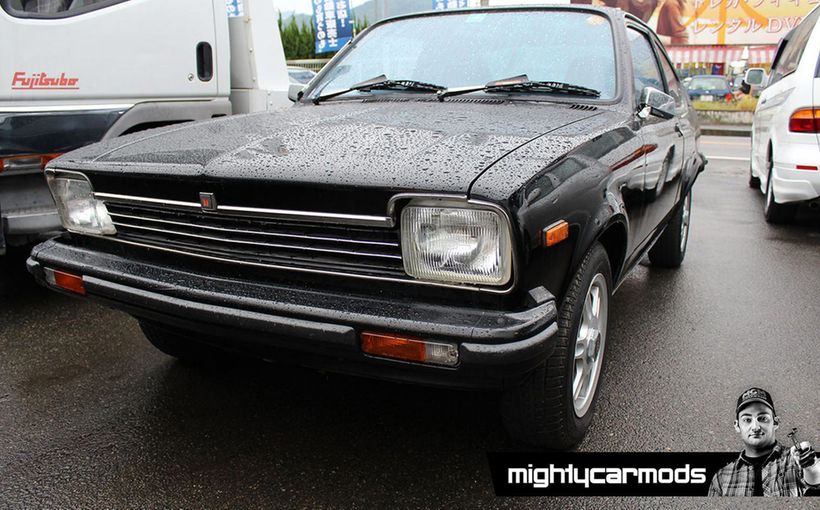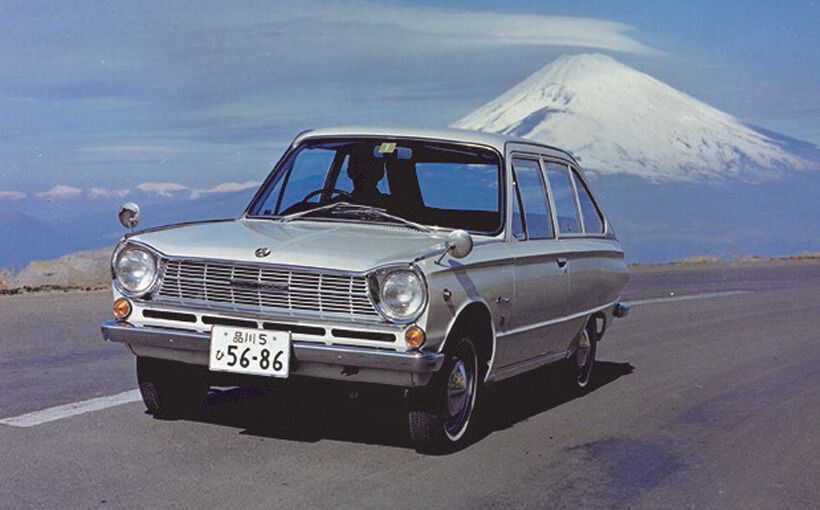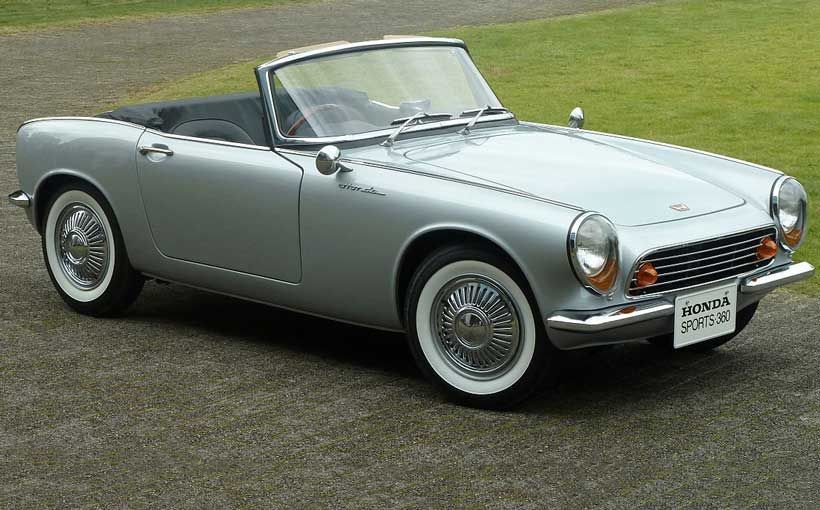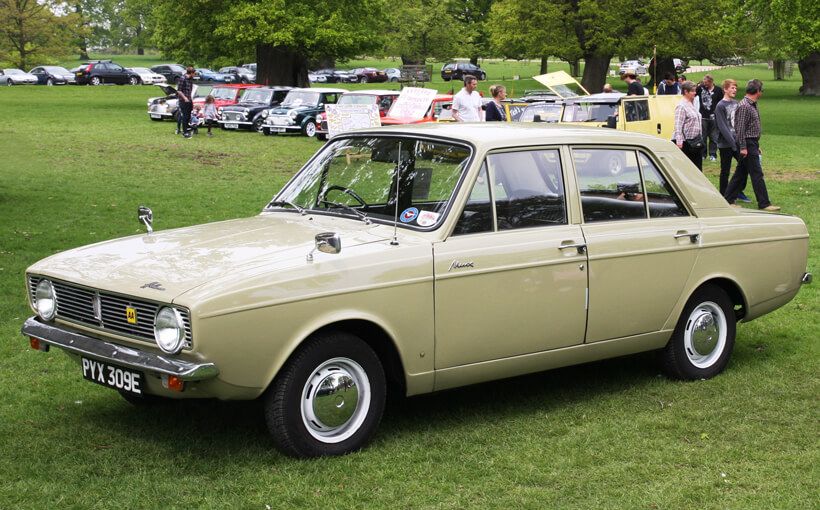Isuzu Bellett: The Tinkle Belle that Rang Alarm Bells

The two unknown Japanese cars on the August 1964 cover of Wheels looked too mainstream to generate a laugh, the usual reaction to a new small Japanese car. The new Bellett, Isuzu’s first home grown replacement for its 1950s Hillman Minx built under licence, was not funny anymore. Paired by the same local importer, the Mitsubishi Colt and Isuzu Bellett were the second wave of an invasion that was getting serious.
Not only was the Bellett appearance a generation ahead of the Ford Cortina, Hillman Minx, Vauxhall Viva, VW Beetle and Morris 1100 that kept Australians in work, it had all the makings of an exceptional car underneath.
Australians on production lines and in the showrooms could see this shadow extending its reach across the local market. Many had legitimate concerns that those pulling the strings in the British and American head offices had yet to recognize the threat.
Their fears were justified after the Bellett marked a turning point. At $1854, it was the first of its kind to go beyond adding extra bells and whistles to old school engineering. As Wheels August 1964 noted, it offered performance that was knocking on the doors of the premium Cortina GT and Humber Vogue Sports family fours, while its all-independent suspension helped it post point-to-point times faster than most six cylinder cars. Fuel economy, as expected of Japanese cars even in 1964, was exceptional.

Even if the rear swing axle suspension had limitations, it was not perceived that way in 1964. The only other front-engine/rear drive four door sedan that had rear swing axles was the Mercedes-Benz range.
The convincing Bellett sedan was quickly followed by a GT coupe with performance that was knocking on the door of highly-credentialled sports models.
The Bellett 1500 Sedan (PR20 series)
The Bellett was not Isuzu’s first home grown model. That honour belonged to a larger model called the Bellel that supplemented the Hillman range in 1961. Although its profile was similar to a Farina Austin or Lancia Flaminia, it featured stacked headlights and strange triangular tail lights that paid homage to recent US designs.
Mechanically, it followed Hillman practice. The Bellel was quickly facelifted with single headlights and conventional tail lights that left it with more of a PininFarina flavor. This has since prompted suggestions that the Bellett’s styling was Italian.

The Bellett was a domestic 1963 model that ended Isuzu dependence on the Rootes Group at a time when Hillman management was looking at closer ties with Isuzu for a Minx replacement. The progress behind closed doors was underestimated. Hillman had become redundant.
Did Isuzu use the word Bell to describe a bell that rings or, was it Belle, as in Belle of the Ball? As a smaller companion for the larger Bellel, the new model had “ett” added to Bell or Belle, as in cigar and cigar-ette. Some suggest the extra “eL” in Bellel denoted 50 bells while others claim Bellel was a Belle with Luxury.
Either way, Bellett as a smaller version of Bell or Belle made sense. Given the difficulties that Japanese companies were still having with names (Cedric and Homer are two that come to mind), Bellett was arguably better than Florian, the Bellett’s later big brother.

Styling
Bellett styling represented an unexpectedly mature departure from Toyota’s early oddball efforts and Italian studio efforts such as the Datsun Bluebird, Mazda 1500 and Hino Contessa. That a Japanese company could present an original design that not only looked right to Western eyes but represented an advance marked the removal of the last bastion of defence for the West.
At the time, the Bellett was compared with the latest Lancia Fulvia, a car it barely resembled. It was the Mitsubishi Colt 1000 released at the same time that shared the Lanica’s angular, boxy look. Wheels in August 1964 got it right after it suggested that the in-house Bellett was “distinctive, while owing something to Italian and American influences”.
A trip back to 1961-62, the period when Bellett styling would have been locked-in, points to a single influence. The Vauxhall FB Victor on its 1961 release was a styling award winner created by a British team under Gerald Palmer. For a cheap four cylinder family car, there was nothing like the Victor in looks in 1961 although its distinctive front and sloping rear had appeared on US Fords.
The Bellett is remarkably similar to the Victor in profile if not detail. Isuzu described this look as an “oval line”, a big arc from front to rear broken-up by the latest three box detailing. Because Palmer’s earlier Jowett Javelin and Nuffield models including the MG Magnette were both products of this look, the same process is evident in the FB Victor.

The Bellett’s curved sides were also ahead of the trend while its quad headlight grille seemed to draw on the latest Lincoln. Australians already familiar with the local 1962 XL Falcon and Vauxhall Victor found much to like about the new Bellett.
There were two distinct specifications: early-1964 then late-1964 which shared the same styling. Pick the earlier 1964 examples with their solid black grille badge, detail interior differences and a spear through the 1500 badge on the rear pillar.
The 1966 ½ upgrade seemed to confirm the US influence with a mesh grille divided by a strip of oblong blocks, similar in principle to the XR Falcon of the same year. The original quad headlights, which were designed to look like two different sizes for effect, were now presented as a matched pair. It was around this time that moves to sell the Bellett in Canada as a locally manufactured model were in full swing.
The original tail lights were a narrow vertical “pear” or teardrop style with separate indicator/reversing lights that came in clear or amber. They changed to the horizontally-divided hexagonal look as seen on the first Bellett GT with the mid-1966 upgrade.

Around this time, a parallel Bellett B range was introduced with a longer wheelbase. This version had a live rear axle which, combined with a square rear body section similar to the “shovel-nose” Corona of the era, delivered a bigger boot. Rectangular headlights distinguished it from other Belletts at the front. Not seen in Australia, it was more of a work-vehicle or taxi version of the Bellett with an LPG option.
At the end of 1967 and into early 1968, the windscreen design was changed as the upper edge of the screen was lowered slightly below the roofline. The previous screen design extended the glass into the roof.
By 1968, the Bellett’s opposition had caught up including the new Datsun 1600. The 1969 facelift started to appear locally in October-November 1968 featuring a simpler grille with two horizontal bars top and bottom with a centre mesh section. This gave it a cleaner look similar to the Datsun 1600. Horizontal tail lights in a single strip on each side were effective in making it a look little wider and more modern.
A 1970 facelift, the most major in terms of body changes, was on the agenda for Australia. However, sales had started to stall as the extra local content of the Bellett’s next generation rivals added pricing pressures as well as their fresher looks.

This facelift relocated the wiper pegs to the opposite side in a separate scuttle panel which in turn dictated a shorter bonnet. The previous bonnet extended to the base of the screen. Although eyeball dash vents arrived with the 1966 ½ facelift, it wasn’t a proper flow-through system until extractor vents were added below the rear screen as part of this 1970 facelift. Other changes included lifting the front bumper and moving the indicators below it, bringing the sedan closer to the GT.
Although the last Belletts sold across Australia were generally the 1969 update, just five of the 1970 facelift were sent to Tasmania. One survives.
For a 1963 Japanese shape to still look as modern as it did on its January 1971 local withdrawal, it had lifted the bar. A fussier divided grille, which did nothing to improve the Bellett over the original, kept the Japanese version alive from 1971 to 1973.
Its ultimate replacement, the Opel T-car, which sold in Australia as the Holden Gemini and badged as the next Isuzu Bellett in Japan, was an ideal progression over the original Bellett styling.

Engineering
The Bellett was a mixture of the proven and adventurous. The 1500 G150 pushrod engine was described as a metric version of the Hillman engine but it was more than that. Its 1471cc featured a 79mm bore with a 75mm stroke on a compression ratio of 8.5:1.
The 1494cc Hillman engine it replaced had a 79mm bore with 76.2mm stroke and an output of 57bhp/43kW. The Bellett’s initial 66bhp/49kW low-comp output was nothing special but as a G150C, it was pushed up to 71bhp/53kW by November 1964, a good figure for this capacity. It also gained an alternator around this time.
For such a small car, the engine was mounted unusually well-back and tilted rearwards with a front-hinged bonnet. It allowed a better spread of weight than usual.
Its four speed manual gearbox, described as substantial at the time, did not have synchro on first.


The front suspension was conventional but robust with unequal length wishbones, telescopic dampers and anti-roll bar. The coil spring/damper units extended through the upper wishbones and had their own upper mounting points. Steering was by rack and pinion.
The rear suspension was the big surprise as it was the first front engine/rear drive Japanese car of this size with a fully independent rear suspension. The larger Prince Gloria featured a de Dion rear tube to contain camber changes.
Isuzu engineers addressed the excessive camber change generated by swing axles with a more thorough approach than most. There were the usual semi-trailing arms supporting coil spring/damper units and a solid transverse cradle supporting the differential.
The clever part was a transverse leaf spring behind the suspension attached below the diff in the centre and the semi-trailing arms at each end.
Separate to the main suspension components, it acted like the compensator spring fitted to racing VWs and early Porsches. Mercedes-Benz employed an additional centre coil spring between the swing axles for the same purpose.
As a camber compensator and anti-roll measure, it was obviously very successful as praise for the balanced handling and grip over all surfaces was a constant in all Bellett reviews. Although oversteer could be generated on demand and the early rear suspension could be a little twitchy with throttle changes, it was not known for VW or Renault-style rollovers.
Because the crude swing-axle rear suspension on the Triumph Herald /Spitfire used a transverse leaf spring as its main springing medium without any camber control except limiting straps, the Bellett design was assumed to be the same. They couldn’t have been more different.
However, the first series was less than perfect mechanically. The old school gearbox had to go, an automatic option was needed and the rear suspension geometry needed further tweaking.
The 1966 ½ facelift announced in June 1966 was critical to finishing the job. A new gearbox added synchro to first gear and while still notchy, its shift was much faster. A Borg-Warner Type 35 automatic was added as an option.

The rear suspension was given new mounting points and the coil spring/shock units were re-calibrated. The changes were acclaimed after they reduced throttle-change twitchiness to live rear axle levels while retaining the advantages of a proper IRS.
By this time, the Bellett was established as a true 90mph/144km/h performer with a standing quarter mile of just on 20 seconds. Fuel economy of 34mpg/8.1 L/100km was exceptional.
The Bellett needed the front disc brakes of the Bellett GT as the standard drums drew regular criticism but never got them. Fragmented local distribution coupled with standard equipment expectations versus the hidden virtues of disc brakes in the showrooms probably conspired against them as more Bellett rivals became locally-assembled and cheaper.
Yet the Bellett was constantly improved with a five-bearing crankshaft arriving in mid-1967 with major changes to the sump design as a running change. Refinement was improved. An alloy head was fitted late in 1967, early in 1968, roughly in line with the change in windscreen design.
In October-November 1968, in line with the facelifted 1969 body details, power was boosted to 81bhp/60kW.

Cabin
There were three different cabin designs. The first featured a basic wrinkle-finish steel dash with padding and two separate round instrument pods pointing at the driver. Early cars could be ordered with a bench seat/column change or front buckets with floor change.
Depending on state distributor, there were Standard and De Luxe versions throughout this early period.
The second cabin was part of the 1966 ½ upgrade and included a brand new dash that presented the instruments in a vertical panel. Seats were progressively improved.
The final variation was the December 1968 upgrade of the second dash which addressed latest safety expectations with anti-glare instruments, extra padding in various locations including sun visors and steering wheel. Seats were re-designed for extra comfort and space.
As an imported car, the Bellett had been progressively pushed over $2000 by extra duty and to cover the price increase, an upgraded single specification, similar to earlier De Luxe levels, was the only model offered in its final guise.

The Bellett 1600 GT PR90/PR 91
This coupe body shape, not to be confused with the two-door sedan available elsewhere, was launched as a PR80 Bellett Coupe identical mechanically to the 1500 sedan. There was also a PR801500 GT version, which ran the GT specification except it was based on the 1500 engine. Australian importers bypassed these versions.
Hence it was the PR90 1600 GT first to be launched locally in April 1966 with this sportier two-door centre-pillar hardtop body. It featured a special horizontal bar grille with two large outer headlights and smaller inner fog lights, both in the grille.
The smaller fog lights allowed a more slender grille which, along with the repositioning of the parkers/indicators under the bumper, created a very different look from the sedan. Larger hexagonal tail lights previewed what was coming on the sedan.
The 1600 engine was 1579cc with an 83mm bore and 73mm stroke. With raised compression ratio, alloy head, hotter cam, new exhaust and twin side draught Hitachi SU-type carburetors, power was boosted to 91bhp/68kW or just under the current MGB’s 1800 engine. The old gearbox, a throwback from Hillman days, did little to enhance the performance but it gained a remote gear shift to match the lower and sportier driving position.
Firmer suspension settings calmed the rear-end twitchiness of the early sedans while the front disc brakes were hard to fault. The rear drums were upgraded to finned aluminium.

The PR90’s basic origins were evident with a mixture of the early sedan’s dash and an add-on centre console filled with gauges. The two instrument pods ahead of the driver were slightly deeper than the sedan’s and were devoted to tachometer and speedo, with graphics and needles to match the console gauges.
Despite the better seats and sports steering wheel, it was similar to what many local enthusiasts were doing in their backyards. Yet its 100mph/160km/h plus performance and 18.6 second standing quarters had everyone’s attention at $2900.
Australian feedback was pivotal for the Isuzu factory to address the shortcomings and just in time. A duty increase pushed the price over the $3000 mark.
After just 55 examples of the PR90 GT were sold, the November 1966 PR91 upgrade delivered an impressive piece of kit. Wheels registered a 116mph/186km/h fastest run and a quickest standing quarter of 17.8 seconds. It was headlined as “Bellett’s Baby E-Type”.
The single headlight grille with its slotted single horizontal bar looked cleaner but the add-on bumper-mounted fog lights looked a little untidy even if they invited a competition association.
Inside the new dash was striking with fake wood finish and the minor gauges lifted up into the driver’s vision. Eyeball fresh-air vents flanked each side. The centre console now looked as though it was meant to be there and the Nardi-type woodrim steering wheel was top-shelf.
Isuzu was now quoting a capacity of 1584cc with a 82mm bore and 75mm stroke, basically a bigger bore version of the 1500 five-bearing Bellett engine. If those numbers seem familiar, it is because this engine in a later evolution became the Isuzu 1.6-litre that gave the Holden Gemini such a lead in its class in 1975.

Could you imagine telling Holden production workers or management in 1966 that the foundations for the new engine that would be powering Holden’s Viva replacement in nine years’ time could now be inspected in Isuzu showrooms!
Power was a healthy 93bhp/69kW but the 9.3:1 compression ratio meant that it required 98 RON Super or higher, like the Cooper S. Isuzu’s latest all-synchro gearbox played a big role in the improved performance and as for the previous GT, it was also given a remote shift. Handling went up another notch in terms of grip and predictability but ride harshness was emerging as an issue.
Detail finish inside and out had improved dramatically to the point where it was quite a desirable car regardless of its entry level Japanese origins.
Isuzu didn’t rest there either. By May 1968, another upgrade lifted the bar. This time it was given a new quad headlight look later shared with the sedan and horizontal tail lights also similar to the later sedan but with three sections each side.
The front bumper location on the Coupe during this period was always closer to the grille than the sedan with the indicators/parking lights below the bumper, not above. It made the Coupe look slightly sleeker until this look was shared with the sedan after the 1970 facelift.

Testers compared its character to a rorty MGA in feel and declared that it was a true sports car in the best British tradition. The engine had the same torquey feel and fruity exhaust resonance.
Although the cabin was similar to the previous upgrade, there were many detail differences as for the sedan. The most obvious was a different padded steering wheel centre and horn tabs in the spokes to bring it in line with new safety expectations globally. Its sporty driving position and seats were still a benchmark for this price range.
Apart from the tendency for the standard cross-ply tyres to bring on the “dreaded swing axle tuck under” earlier than desired, the grip and ride over all surfaces were again praised as was the rack and pinion steering.
The 1600 GT Coupe quietly disappeared at the end of 1969 after extra duty further inflated its fully imported price tag to $3358. It was a big ask for a car that was starting to show its age, on the outside at least. It was perfect timing as a rush of competent new local and imported coupes would soon make it look dated and overpriced. As the ultimate local Bellett, it was at least allowed to retire when it was still on top of its game.

Local Deliveries
Approx 16,000 Bellett 1500 Sedans
290 Bellett 1600 GTs (55 PR90s and 235 1966-69 PR91 models)
122 Wasp light commercials
Australia was the biggest Bellett market after Japan.
The Wasp Light Commercial
Although the Wasp looked like a variation of the Bellett sedan, in much the same way as Holden or Falcon utes were based on passenger cars, this was not the case. It was the direct ancestor of today’s Holden Rodeo/Colorado and Isuzu D-Max commercials.
All local deliveries came in Wasp blue with the Bellett 1500 engine, 4-speed floor shift and bench seat. There was a choice of a tray back or styleside. Only a third were delivered locally as stylesides. There the resemblance to a Bellett sedan ended.
The Wasp was one of several from this era that helped define the formula for a Japanese light commercial with a full chassis, torsion bar front suspension, sturdy leaf-spring live rear axle and massive drum brakes with 6-stud hubs. The disc brakes from a Holden Rodeo bolt straight onto a Wasp.

The bumpers were more like a steel girder, front guards were expanded for the 14 inch light truck wheels, the grille and headlights surrounds were different and the bonnet’s internal structure was revised under the sedan’s outer skin. Sedan door skins were combined with rounded window frames.
Inside, the Bellett dials, dash and steering wheel remained but fittings like horn ring and the lone sunvisor were more basic. Wasp hubcaps, which appeared on several later model Isuzu commercials, were painted.
Thanks to Bellett enthusiasts Dave Carey and Brett Wild and www.bellett.net for the factory brochure photos.
Protect your Isuzu. Call Shannons Insurance on 13 46 46 to get a quote today.









